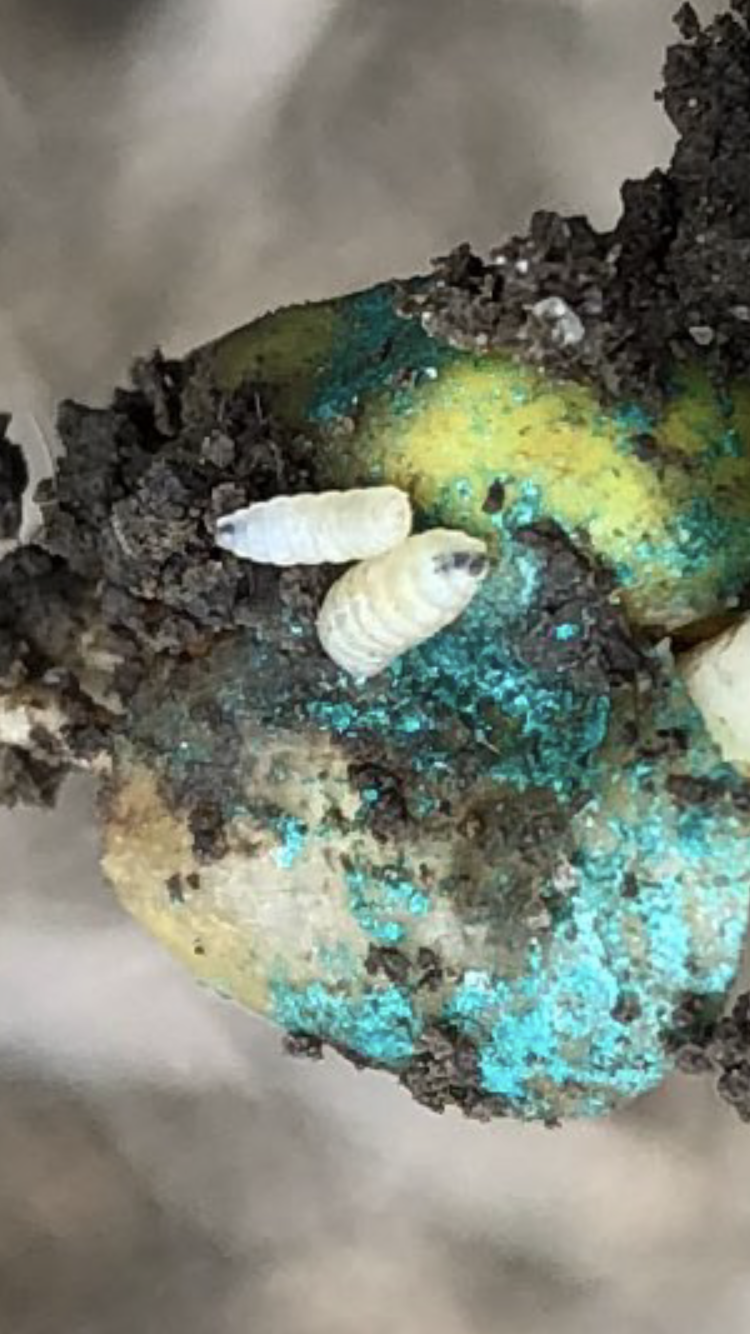Seedcorn maggot (Delia platura)
Description
Crops at risk include corn, soybeans, and dry edible beans. The seedcorn maggot is a small (6–10 mm or 0.2–0.4 in.), yellowish-white, headless, legless larva. The body tapers to the front, with two small protracting mouth hooks. The adults resemble a small, elongated housefly that is slender, light grey and approximately 5 mm (0.2 in.) in length.
Life Cycle
There are two to four generations per year, though the first generations are the most damaging to the younger seedling crop. The seedcorn maggot overwinters in the pupal stage approximately 7–13 cm (0.3–0.5 in.) down in the soil. Adults emerge in early spring and are active at temperatures between 16°C and 29°C. Once mated, female adults (flies) search for an egg-laying site from April until the middle of June. The females are attracted to moist soils that give off an odour of decaying organic matter (crop residues, pre-plant tilled weeds, freshly applied and incorporated solid manure or freshly tilled soil). The adults lay their eggs in the crevices of wet soils. The larvae then penetrate germinating seeds. Peak adult activity occurs in early spring and in the fall, with larvae going into a summer diapause when temperatures are above 29°C.
Damage
The maggots burrow into germinating seeds, roots, cotyledon, embryo and hypocotyl, weakening the seedling. If conditions remain ideal, they can also mine the stem of the young seedling. Slow-to-emerge fields will experience gaps in stand. Unlike wireworm, seedcorn maggot damage is usually found over a generalized, large portion of the field.
Conditions that Increase Risk
Seedcorn maggot is usually a problem during cool, wet springs when germination is delayed. Heavy textured soils and soils that retain moisture are prone. Freshly tilled soils in the spring with recently applied manure or freshly buried green residues just prior to planting are most attractive. Deep planting increases injury by slowing crop emergence, which increases the feeding period.
Scouting
Look for signs of injury as soon as the crop emerges. Scout 10 areas of the field, looking for poor emergence, and dig up seeds and seedlings to look for scars and tunneling. There may be regulations on access to neonicotinoid treated seed in Ontario, which are not described here.
No action threshold is available at this time. Nothing can be done to rescue a damaged field except replanting if necessary.
Management Strategies
- Consider insecticide seed treatments or in-furrow, soil-applied insecticides in early-planted fields with risk conditions mentioned above.
- Use good-quality seed that will emerge quickly and plant at the proper soil depth.
- If manure or green residues are incorporated in the spring, wait at least 2 weeks before planting
- Plant later, in good soil conditions when cool wet weather is not in the forecast to ensure rapid seedling emergence.
- No rescue treatments are currently available.
